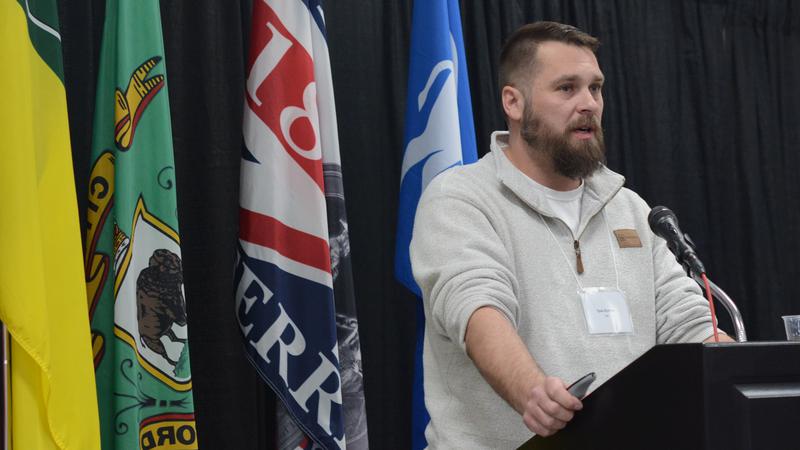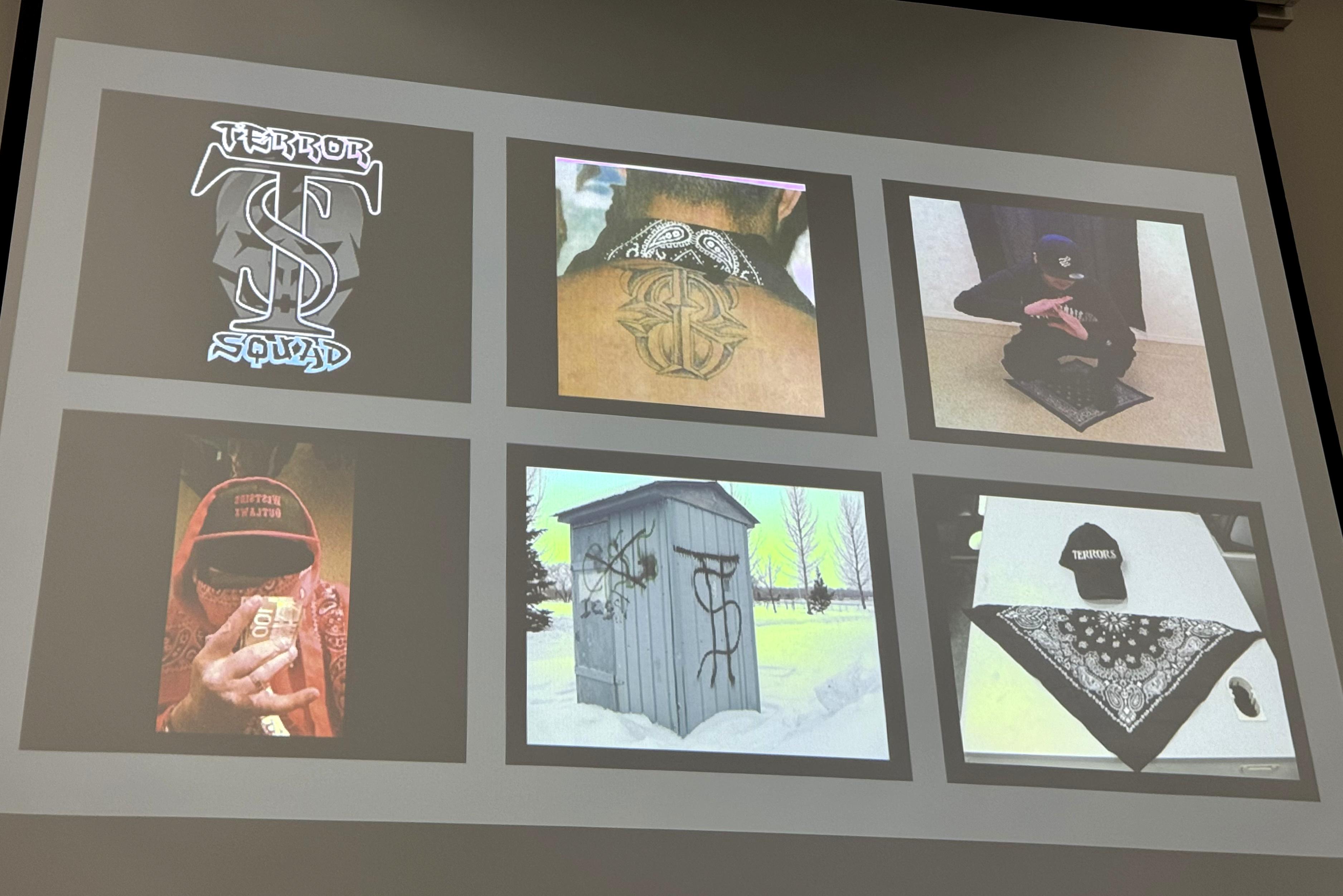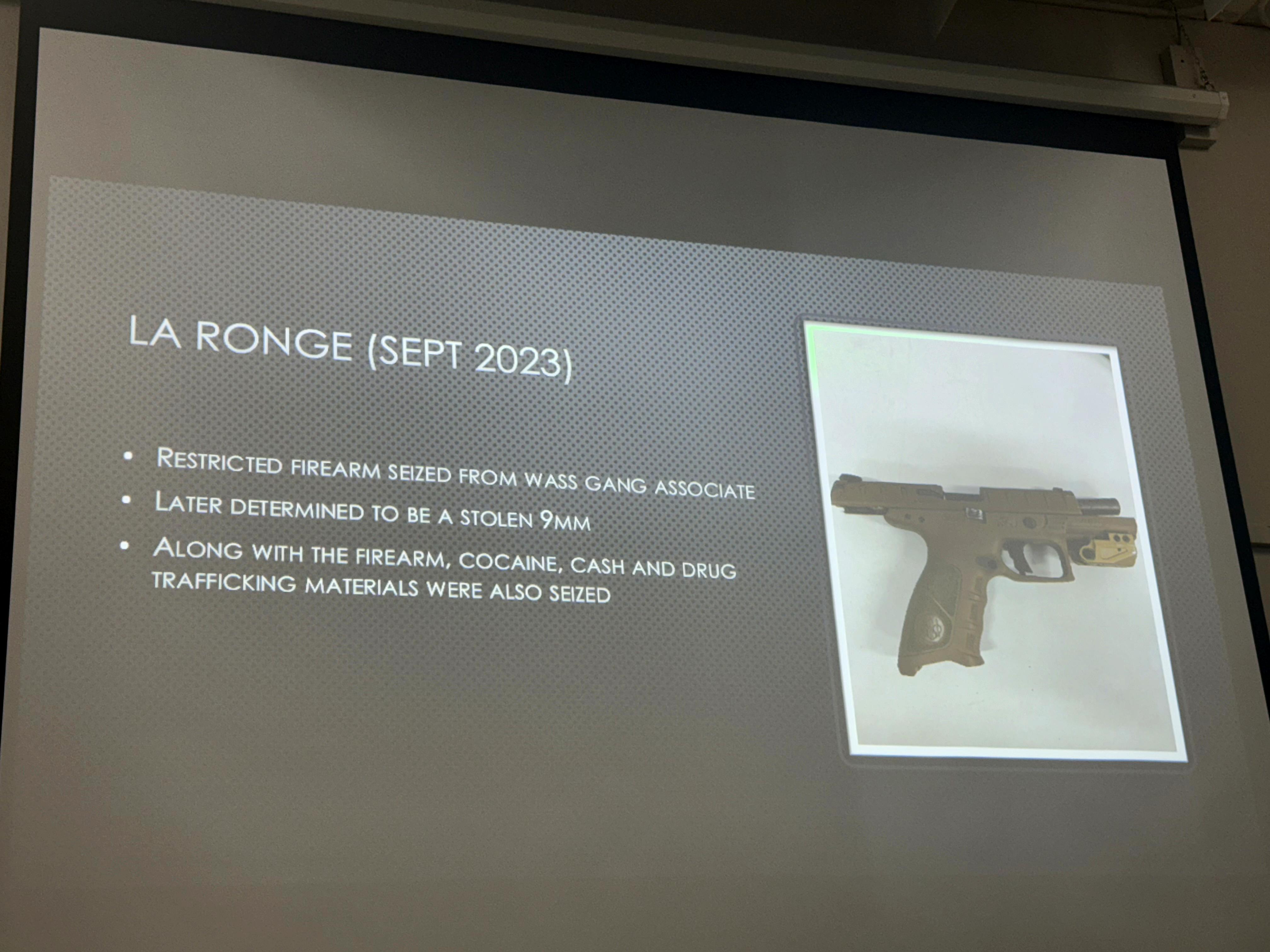
Mountie talks about gang issues in Saskatchewan
Gangs in Saskatchewan are moving beyond major cities and into smaller communities, using social media and music to recruit young people. Women in gangs are also playing increasingly violent roles, Cpl. Tyler Zrymiak says.
At the first annual Gang Prevention Symposium in North Battleford Thursday, Zrymiak of the Saskatchewan Enforcement Response Team (SERT) detailed the province’s growing gang problem and the challenges facing law enforcement.
“I think everybody here would say that they know what a Hells Angels member looks like,” Zrymiak said. “Our street gangs are a lot different. Our street gangs fall out of that same sort of indicator.”
 Some symbols you can see on a gang member. ( slideshow/Tyler Zrymiak)
Some symbols you can see on a gang member. ( slideshow/Tyler Zrymiak)


